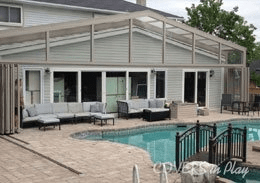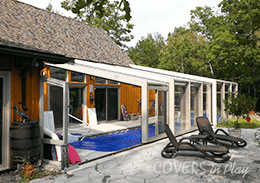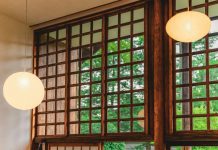
Installing a high-quality, hard-shell pool dome is an excellent way to extend your swimming season, protect your pool, and reduce maintenance. Unlike cheap, disposable inflatable or vinyl enclosures, a hard-shell dome is durable, weather-resistant, and provides proper insulation. This guide will walk you through the process of installing a hard-shell pool dome correctly.
Understanding Hard-Shell Pool Domes
A hard-shell pool dome is a sturdy, enclosed structure made from materials like polycarbonate or reinforced fiberglass. These domes provide superior insulation, protection from the elements, and year-round usability. Unlike disposable fabric or vinyl enclosures, which are not suitable for winter and do not withstand wind or snow, hard-shell domes are engineered for durability.

Benefits of Installing a Hard-Shell Pool Dome
Extended Swimming Season
Hard-shell domes effectively retain heat, preventing temperature loss and making it possible to use your pool even in colder months. Unlike thin PVC vinyl covers, which do not insulate and cannot withstand snow, these domes provide real, all-season usability.
Superior Weather Resistance
Unlike disposable inflatable domes, which collapse under snow or strong winds, hard-shell domes are designed to withstand heavy snow loads and strong winds. You do not need to remove snow from a properly installed hard-shell dome, unlike other enclosures on the market.
Increased Safety & Security
Hard-shell domes create a strong, lockable barrier around your pool, preventing unauthorized access by children, pets, or wildlife. This adds a layer of protection not provided by cheap vinyl or inflatable pool dome covers.
Low Maintenance
Hard-shell domes keep debris, dirt, and insects out of your pool, reducing the need for frequent cleaning and chemical treatments. Unlike vinyl enclosures, which degrade quickly and require frequent replacement, a hard-shell dome is a long-term investment.

Step-by-Step Installation Guide
Assess Your Pool Area
Measurements
Measure the full dimensions of your pool, including any surrounding deck area you plan to enclose. Allow for extra space to ensure a proper fit.
Site Preparation
The surface where the dome will be installed must be level and stable. Hard-shell domes cannot be installed on grass or soft ground. A proper foundation, either concrete or steel, is required to ensure structural integrity and safety.
Choose the Right Dome
Material Selection
- Polycarbonate Panels – Excellent insulation and durability, withstands all weather conditions.
- Fiberglass-Reinforced Panels – Extremely strong, provides long-term stability.
Avoid fabric or vinyl enclosures, as they offer poor insulation and do not last in harsh weather conditions.
Design Considerations
Decide between a fixed or retractable dome. Some hard-shell domes feature motorized systems for convenient operation.
Obtain Necessary Permits
Before installation, check local regulations to ensure compliance with zoning and safety requirements.
Prepare the Foundation
Surface Requirements
- Concrete Slab or Steel Tracks Required – Hard-shell domes must be securely fastened to a stable foundation.
- No Soft Ground or Grass Installations – Unstable surfaces can lead to structural failure.
Assemble the Dome Frame
Follow the manufacturer’s instructions for assembling the dome frame. Ensure all components are securely connected, and use professional assistance for large installations.
Anchoring
- Secure to Concrete or Steel Tracks – Hard-shell domes require proper anchoring to withstand wind and snow.
- No Temporary or Inflatable Anchoring Methods – Unlike cheap enclosures, these domes are designed for permanent installation.
Install the Dome Panels
Polycarbonate or Fiberglass Panels
- Fit panels securely into the frame to prevent leaks and ensure stability.
- Check for proper alignment and sealing.
Ensure Proper Ventilation
Hard-shell domes include integrated ventilation systems to prevent condensation and maintain air quality. Ensure vents are properly placed and functional.
Final Inspection & Maintenance Tips
Final Safety Check
- Verify that all components are securely fastened.
- Check that the locking mechanisms function properly.
Routine Maintenance
- Regular Cleaning – Use mild soap and water to clean polycarbonate or fiberglass panels.
- Snow & Wind Considerations – Unlike cheap enclosures, hard-shell domes do not require snow removal. However, always close the dome in extreme weather to prevent unnecessary strain.
- Inspections – Periodically check for wear and tear, especially on moving parts.
Conclusion
A hard-shell pool dome is a superior investment compared to disposable vinyl or inflatable enclosures. Unlike cheap covers that collapse in bad weather and offer poor insulation, a properly installed hard-shell dome provides year-round usability, durability, and security. By following this guide and ensuring a solid foundation, you can enjoy a worry-free, all-season pool enclosure that stands the test of time.








